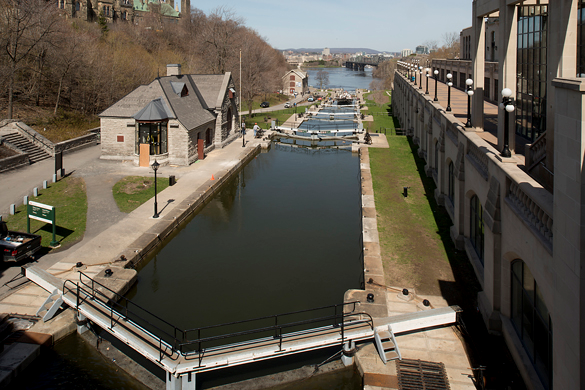Having written an op-ed piece in the Ottawa Citizen this week, you might think that I had said everything I could about the proposed addition to the Château Laurier. But the issue is both complicated and important, and I want to consider at least one more aspect of it.
I’ve had some interesting and thoughtful feedback on the column. One, from a reader named Kenneth (I’ll withhold his last name since it was a private e-mail) pointed out that “The Chateau is not just a single historic building. It is adjacent to, and visually part of, the parliamentary precinct.” This echoed something that my colleague Michael Windover had said: “The issue is almost less about the old hotel… and more about landscape, cityscape and skyline. I’m not sure there’s a higher profile site/cultural landscape in the city.”
These are great points, and I wish I’d raised them in the op-ed (alas, the 600-word guideline is a very short leash). If this addition to the Château goes ahead, it will have a huge impact not only on the building itself, but on how the whole parliamentary precinct is viewed and experienced.
The first thing to remember is that we are dealing with the gateway to a UNESCO World Heritage Site. It has been pointed out that not every building along the 202-kilometre Rideau Canal is 24-karat stuff. True, but we’re talking here about the front door, not the back shed. It needs to be treated with respect.
The view of the Château from the canal and river is nothing short of breathtaking. But even that is just part of an ensemble. Across the canal, of course, is Parliament Hill. I’ve never photographed the Hill and its setting together, because when I did these shots it was for an architectural guidebook (more on that in a future blog) and it never occurred to me that I’d be using them to make this argument. But here are the two key architectural parts of the ensemble:
This grouping is a stunning piece of architectural theatre, even though there was no master plan. There are so many elements here that we perceive – consciously or not, rightly or not – as part of our national story: English Gothic, French Château, the dogged determination to remain non-American (the canal, conceived in the aftermath of the War of 1812), the heroic transportation feats that made Sir John A’s ‘national dream’ possible (remember that the Château Laurier was one of the country’s great railway hotels). Together, they form a veritable national epic – not to be accepted uncritically, to be sure (where, for example, is the aboriginal presence?), but not to be trivialized or frittered away either. We didn’t burn all copies of the Iliad when we stopped believing in the gods of Olympus.
Bottom line: the Château Laurier is an important building within an important precinct that is suffused with symbolic meaning and historical narrative. You can’t change one thing in this precinct without changing the whole. That doesn’t mean it should never change, but way more thought, care and sensitivity to context – physical and historical – needs to be applied. A really great design could add to this narrative, but the design that’s been proposed only subtracts from it.
Peter Coffman
peter.coffman@carleton.ca



